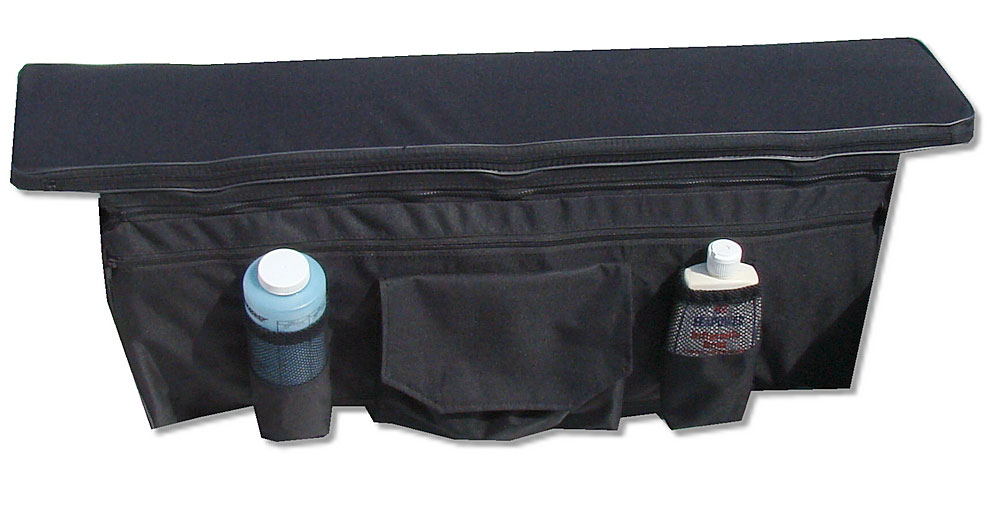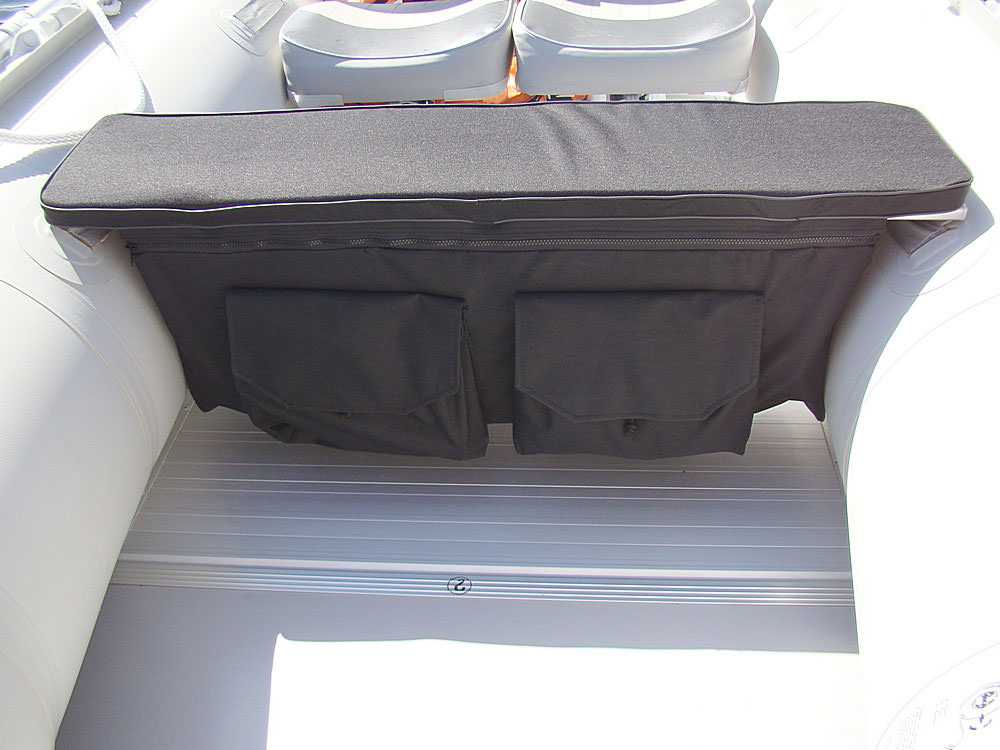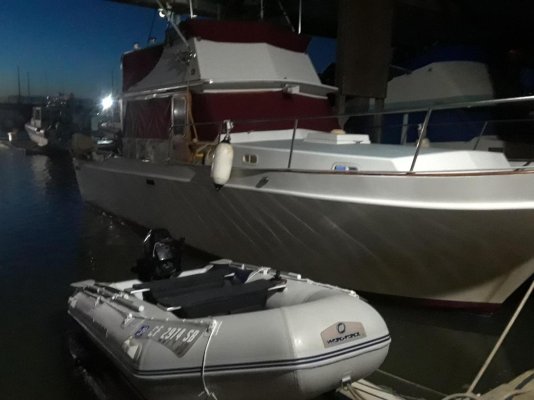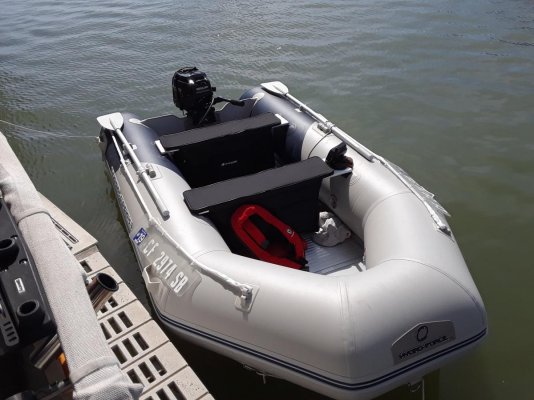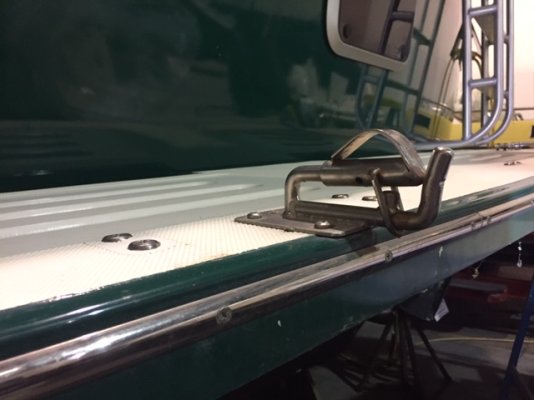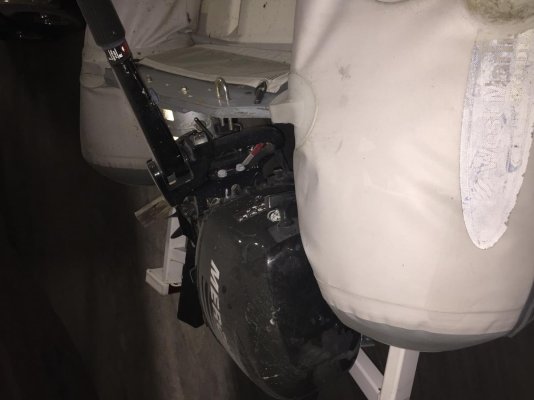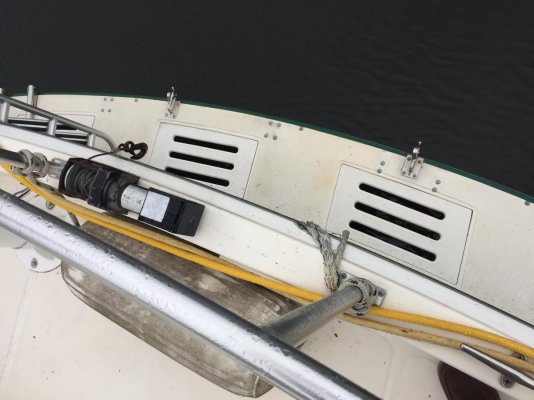As noted before Hypalon was a trade marked product by DuPont, which was discontinued. The product is actually a synthetic rubber (CSM): chlorosulfonated polyethylene (CSPE). There are a number of sources for CSPE. This material will allow air leakage, so the boats are built with a neoprene coating on the inside.
There are a number of different characteristics of an inflatable boat, which makes it more suitable, as well as the actual coating of the fabric. The thickness, and seam construction are major factors in the boats durability and longevity. So do you want a $150 pool toy type of inflatable (and if you use the inflatable instead of a life raft--or even go from your moored boat to shore, in rough weather,) to fail--and leave you in the drink?
The fabric, the quality of the seams, the fit and finish, as well as place of manufacture have a great deal to do with durability, as well as if the material is PVC, CSPE or polyurethane.
I believe back in the late 70's maybe early 80's Zodiac bought Bombard, then Avon in 1998. All of the boats were cheapened, and catastrophic failures began, especially with PVC boats. Virtually all of the cruisers in the South Pacific had dinghies which were failing. A numbers of cruisers were using the inflatables as life rafts, and trusting the Zodiac Name.
Fast forward to 2015, when Zodiac failed, and the new companies: Zodiac Nautic, Avon, Bombard and Mil Pro were spun off. There are the light use, leisure boats, all of the way up to the serious military boats used by SEALs, and other Commando type of operations.
Seam Constriction: Overlapped (with or without taping inside or outside) or butted and taped. The best seams will be butted and taped inside and outside. Good glued neoprene/CSPE seams are stronger than the fabric. PVC boats are usually built with high heat pressure, radio frequencies (RF), or electronic welding, today. This allows a very rapid construction technique, vs the hand gluing of the CSPE materials. Of course PVC boats can also be glued--but this is rare in the commercial world. Recently I made some covers using a PVC/dacron material from Sailrite. I used HH66 glue. (An MEK solvent based glue). I did destructive testing of the seams, and the PVC fabric began to fail before the seam.
My first inflatable was an Avon RedSeal (10'3") Hypalon boat purchased in 1962, and kept for about 15 years. I had a 12 foot PVC "Cagliari " it was cheaper than an Achilles or Avon in the late 1970s. Only problem, was that after using it several years of full time cruising, Calif. Panama to East Coast, one day during a thunderstorm, the "synthetic material Transom--(plastic nylon re-inforced) split right along the sides of the 25 HP Johnson outboard motor. I hand held that motor until my wife jumped off onto our boarding ladder, and then had a spinnaker halyard ready to drop to me as a made a pass, and she held up the motor. I repaired the transom with aluminum and plywood--two days later it split all of the way outboard. I bought a 13' Commercial duty Achilies Hypalon boat. Later I bought a 10 year old Avon 12'6" RIB. I used that for another 8 years and sold it for what I paid for it. My son has a 10' Costco boat for harbor use, but when he ventures out into the Pacific, there is a 20 + year old Avon Hypalon boat aboard his C Dory 25.
With that history, you would think I own a Hypalon dinghy today--but no. I have owned a Bombard AX2 and a AX3. Today, I own a 14 year old West Marine 9;4" boat made by Avon. which is PVC. I have used it for at least 2 months daily every year, in high UV environments. No problems. The rest of the time, it is rolled up into its container.
If I was cruising full time and crossing oceans, I would have a CSPE RIB (fiberglass, because I can repair it easier than I can repair an aluminum hull.)

